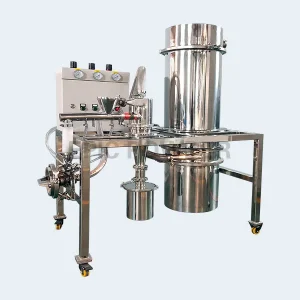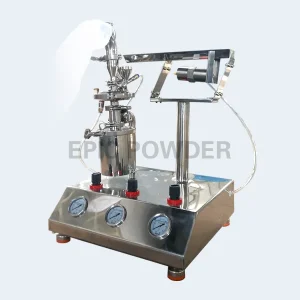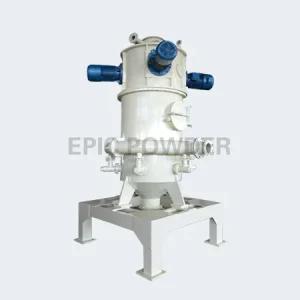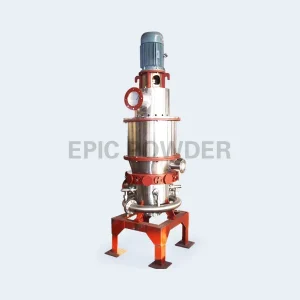This article aims to describe the working principle of a jet mill. A jet mill, also called fluid energy mill, is used for solid material micronization.
Micronization is a term used to describe size reduction where the resulting particle-size distribution is less than 10 microns. Jet mills are used for micronizing solids of chemicals, pharmaceuticals, pigments, minerals, and others like heat-sensitive, corrosive, and abrasive materials.
The micronization process is often considered a black box that produces fine powder and coarse particles. Jet mills operate in compressed air, gas, or high-pressure superheated steam. Jet mills have no moving parts, eliminating contamination from contact with external grinding media. Grinding heat-sensitive and waxy material is also ideal because no attritional heat is generated.
Spiral Jet Mill: Spiral Flow of Grinding Gas
Pulverization takes place in the central chamber of the jet energy mill as the process material is driven at a near-sonic velocity around the perimeter of the toroidal chamber by multiple jets of air or steam. No grinding media is involved. Size reduction results from the high-velocity collisions between particles of the process material itself. The interior of the chamber is designed to allow the recirculation of over-sized particles, enhancing the incidence and the effect of these collisions. As particles are reduced in size and progressively lose mass, they naturally migrate toward the central discharge port, making precise classification automatic and controllable.
Spiral jet mill pictures

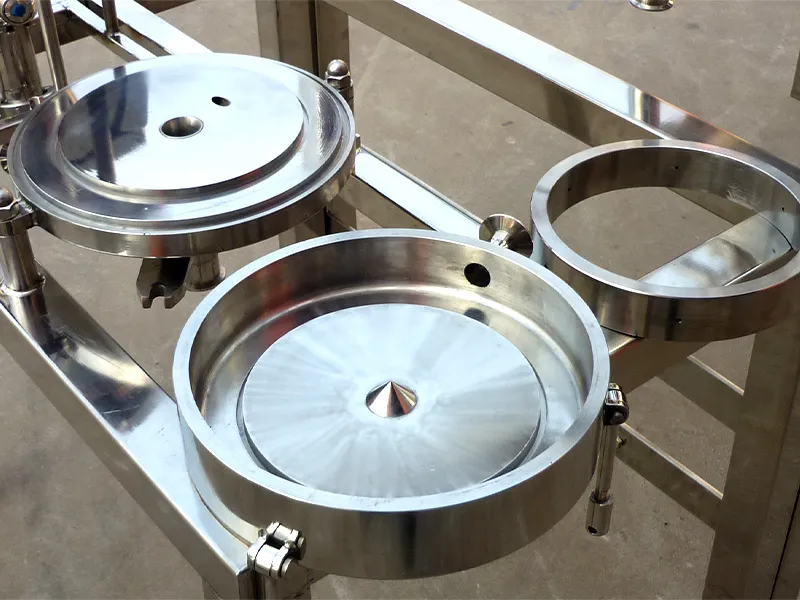
Consider a pancake spiral jet mill as an example. Micronizing and classification take place in a shallow, cylindrical chamber. High-pressure air or steam is injected into this chamber through the specially designed nozzles placed on the peripheral wall at regular distances. The axis of each jet is tangential to the circumference of a smaller, imaginary, concentric circle.
Spiral jet mill product portfolio
Fluidized Bed Jet Mill: Fluidized Product Bed of Grinding
The Fluidized Bed Jet Mill incorporates dense phase micronization using turbulent, free jets in combination with high-efficiency centrifugal air classification within a common housing. This combination allows for enhanced comminution by high probability particle-on-particle impact for breakage and a high degree of particle dispersion for improved separation, resulting in lower overall energy consumption. Jet Milling is an efficient way to mill or micronize various chemicals, polymers, ceramics and other brittle materials. Abrasive and temperature-sensitive products can be finely ground with minimum contamination. The simple, easy-to-clean, cost-effective design offers precise top size control with narrow distributions in the 95% < 5 um to 95% < 70 um size range. Load cells control mill load precisely for optimum grinding efficiency and product size distribution control.
A double flapper valve or injector introduces the raw material feed into the common housing. Mill load is formed by flooding the pulverizing zone above the grinding nozzles. Turbulent, free jets accelerate the particles for impact and breakage. After impact, the fluid and size-reduced particles leave the bed and travel upwards to the centrifugal classifier, where rotor speed will define what size will continue with the fluid through the rotor and which will be rejected back to the particle bed for further size reduction. The high degree of particle dispersion leaving the pulverizing zone aids in the classifier’s efficient removal of fine particles. Operating parameters of rotor speed, nozzle pressure, and bed level allow for optimizing productivity, product size, and distribution shape.
Fluidized Bed Jet Mill pictures
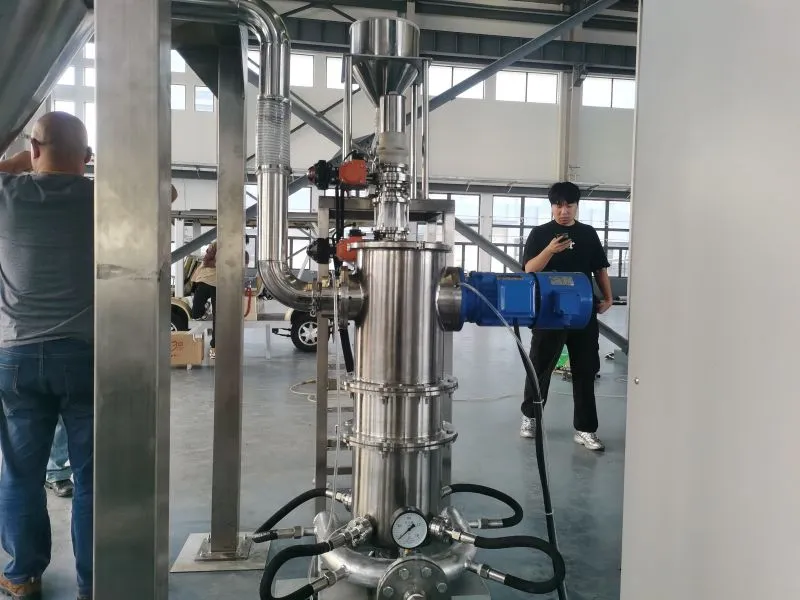
Fluidized bed jet mill product portfolio
Factors to consider when using jet mills
- What is the particle size of the feed material?
- What is the target particle size?
- Is the material a combustible powder?
- Is the material abrasive?
Good candidates
- Dense, hard, abrasive, brittle, friable
- Materials that respond to impact with crack propagation
Poor candidates
- Wet, sticky, entangled, elastic, deforming, light/fluffy
- Materials that absorb impact and/or are difficult to accelerate
Typical materials processed by jet mill
Agrochemicals: Deltamethrin, Carbendazim, Carbaryl, Germicide, Herbicide, Fungicide etc.
Chemicals: Adipic acid, Barium titanate, Calcium chloride, Chromium oxide, Catalyst, etc.
Ceramics: Aluminium hydrate, Silicon carbide, Ferrite, Glass, Zirconium oxide etc.
Minerals: Bauxite, Gypsum, Graphite, Mica, Talc, Tantalum ore, etc.
Paints: Carbon black, Fluorescent pigment, Titanium dioxide, etc.
Pharmaceuticals: Amino Acid, Antibiotics, Aspirin, Guanylate, Furosemide, Penicillin, Vitamin Compound etc.
Battery materials: lithium iron phosphate, lithium iron manganese phosphate, lithium carbonate, single crystal ternary, polycrystalline ternary, artificial graphite, silicon carbon negative electrode, graphite negative electrode, etc.

